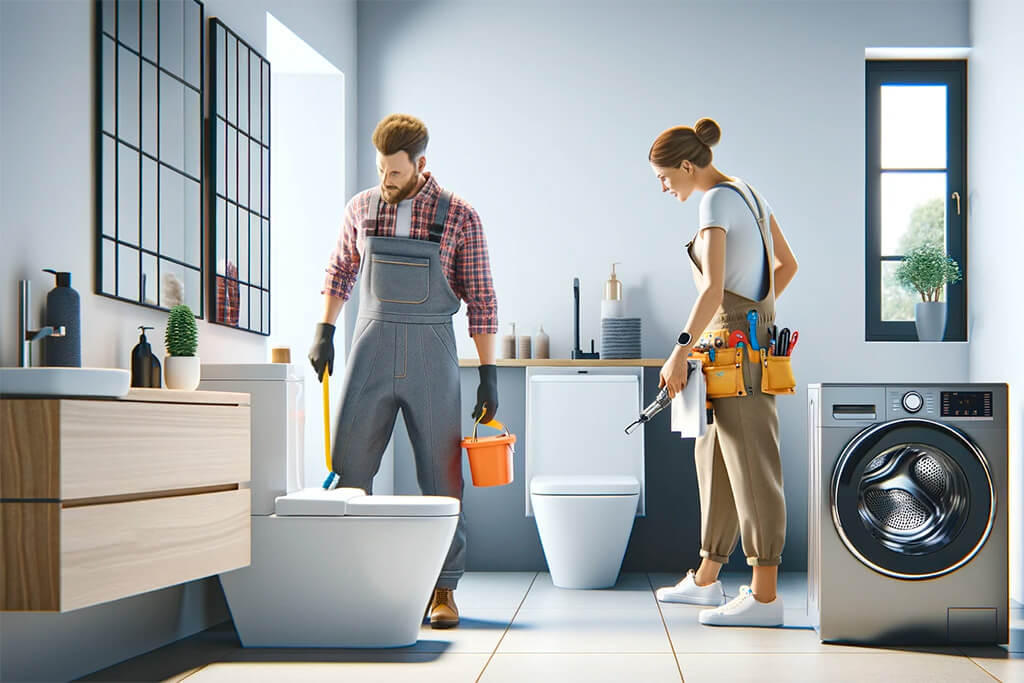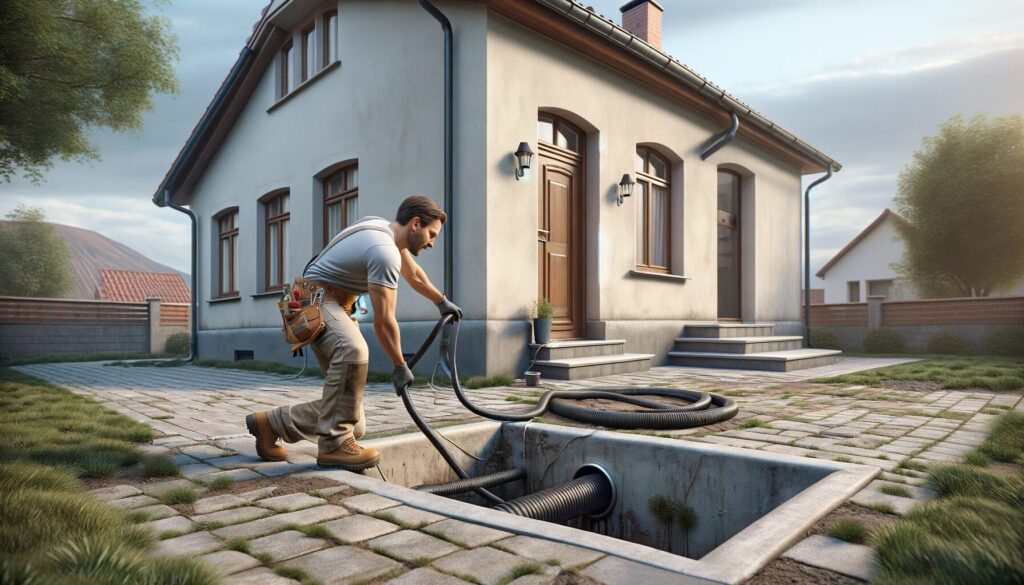In the world of residential construction, the role of sewage ejector pumps is both pivotal and often underrated. These pumps are the workhorses that manage waste in scenarios where gravity alone can’t do the job. For DIY enthusiasts and self-employed construction buffs, understanding the nuances of these pumps is not just beneficial—it’s essential. These pumps aren’t just pieces of equipment, they are critical components that ensure your home’s plumbing system runs efficiently and hygienically.

Basics of Sewage Ejector Pumps
Let’s get down to brass tacks. A sewage ejector pump is a bit like a mini, in-home septic system. It comes into play when bathroom fixtures are located below the main sewer line grade. Here’s where it gets interesting: unlike sump pumps, which deal with extraneous water, sewage ejector pumps handle the heavy-duty stuff—everything from your shower to the kitchen sink waste.
The distinction between sewage ejector pumps and sump pumps is crucial. Sump pumps are all about managing clean water – think groundwater or rainwater that can flood your basement. In contrast, sewage ejector pumps deal with blackwater—the wastewater from bathrooms and kitchens.
Types of Sewage Ejector Pumps
When it comes to ejector pumps, it’s not a one-size-fits-all scenario. There are mainly two types you’ll encounter:
- Pedestal Pumps: These have their motor perched above the basin. This design keeps it dry, making maintenance easier. They’re a bit old-fashioned, but don’t knock them – they have proven their worth time and again. However, they’re not the most discreet option since the motor and piping are in plain sight.
- Pros: Easier maintenance, generally longer-lasting.
- Cons: More visible, potentially noisier.
- Submersible Pumps: Think of these as the stealthy operatives in the ejector pump world. They sit right in the sewage, sealed to keep moisture out. This makes them quieter and out of sight.
- Pros: Quieter operation, less obtrusive.
- Cons: Maintenance can be trickier, requiring pump removal from the pit.
In choosing the right type, consider the environment where it will be installed. If you’re working in a finished area where noise and aesthetics are concerns, a submersible pump might be best. For a more utilitarian space, the reliability and accessibility of a pedestal pump could be more advantageous.
Your choice hinges on factors like noise sensitivity, the installation environment, and budget. But remember, the right sewage ejector pump can vastly improve the functionality and hygiene of any home’s plumbing system.

Installation Guide
Installing a sewage ejector pump might sound daunting, but with the right approach, it’s a straightforward task. Let’s walk through this step by step, keeping in mind that precision and careful planning are key.
Step-by-Step Installation:
- Choosing the Right Spot: Your pump should ideally be close to both the waste-producing fixtures and the main sewer line. Accuracy in placement is crucial for efficiency.
- Setting up the Sump Basin: Carefully excavate a hole for your sump basin. Make sure it’s the correct size – too small, and you’ll have problems, too large, and you’re creating extra work.
- Plumbing Connections: This is where your craftsmanship comes in. Connect the pump to the sewer line using PVC pipes and fittings, ensuring each connection is secure to prevent leaks.
- Electrical Work: It’s safest to have a professional handle the electrical connections. Remember, safety trumps all.
- Testing: Before considering the job done, do a thorough test with water to ensure everything operates as it should.
Tools and Materials:
- Sump basin
- Sewage ejector pump
- PVC pipes and fittings
- Check valve
- Electrical supplies
- Basic hand tools
Safety Precautions and Best Practices:
- Always disconnect power before working on electrical parts.
- Protective gear is non-negotiable.
- Precision in pipe alignment is more than just aesthetics, it’s essential for function.
Maintenance and Troubleshooting
Keeping your sewage ejector pump in top condition isn’t just about responding to problems, it’s about preventing them.
Routine Maintenance Tips:
- Basin Cleaning: Regularly clean the basin to prevent build-up.
- Valve Inspection: Keep an eye on the check valve. A malfunction here can lead to significant problems.
- Pump Inspection: Regularly inspect the pump. Unusual noises or reduced efficiency are often early signs of bigger issues.
Troubleshooting Steps:
- Non-Starting Pump: Check electrical connections first. If the power’s fine, investigate the float switch.
- Ineffective Pumping: Look out for clogs or pump damage.
- Frequent Cycling: This usually points to issues with the float switch or a leak somewhere in the system.

Cost and Considerations
The cost of a sewage ejector pump varies, but understanding what you’re paying for is essential.
Cost Range:
- Basic Models: More affordable, but may have limitations.
- High-End Models: A higher price tag, but usually come with added power and features.
Choosing a Pump:
- Capacity: It’s crucial to match the pump’s capacity to your specific needs.
- Horsepower: More horsepower equates to more power, but consider if it’s necessary for your situation.
- Maintenance Factors: Consider the ease of maintenance and repair. In the long run, this can be a significant time and money saver.
Case Studies
In the realm of home construction, every project tells a story. Here are a few that particularly stand out for their educational value:
Case Study 1: The Basement Bathroom Overhaul
A homeowner ambitiously tackled a basement bathroom installation, meticulously selecting fixtures and finishes. However, he overlooked one crucial element – the sewage ejector pump. It wasn’t long before the bathroom became problematic. By installing a submersible pump and reconfiguring the plumbing, the issue was resolved. This serves as a stark reminder of the critical role these pumps play in below-grade bathroom functionality.
Case Study 2: The Proactive Maintenance Approach
I once worked with a contractor who exemplified the benefits of proactive maintenance. He diligently serviced his ejector pumps every six months, cleaning and inspecting each component. Over a decade later, his pumps still functioned flawlessly, a testament to the power of preventative care in extending the life and efficiency of these systems.
FAQ Section
Essentially, a sewage ejector pump is designed to handle the wastewater from your bathrooms and kitchen, managing both liquid and solid waste. On the other hand, a sump pump primarily deals with clear water, typically groundwater or rainwater, to prevent basement flooding. They operate in different realms of your home’s plumbing system.
For optimal performance, it’s advisable to inspect and clean your sewage ejector pump semi-annually. This regular maintenance can significantly extend the life of the pump and prevent unexpected breakdowns.
If you have a solid grounding in plumbing and electrical work, installing a sewage ejector pump can be a DIY project. However, don’t hesitate to enlist a professional, especially for the electrical aspects, to ensure a safe and correct installation.
Warning signs include unusual noises, frequent cycling, or a noticeable decrease in pumping efficiency. If your pump exhibits these symptoms, it may be time to consider a replacement.
Selecting the appropriate pump involves considering the volume of wastewater to be managed and the vertical and horizontal distance it needs to be pumped. Ensure the pump is adequately powerful for your needs but avoid oversizing, which can lead to inefficiency and increased wear.
